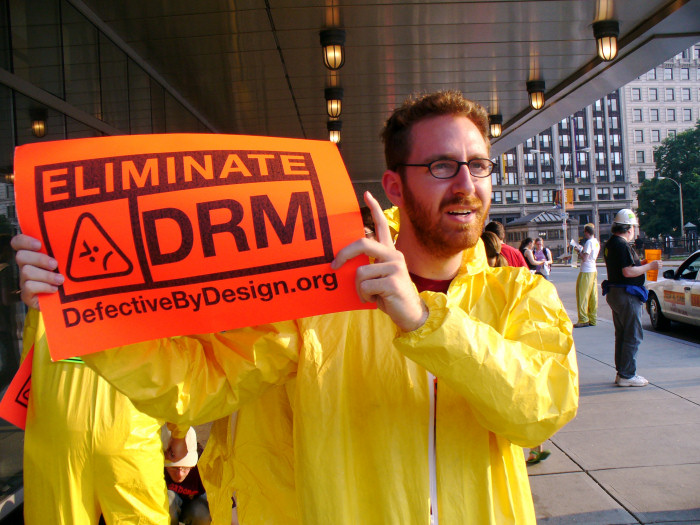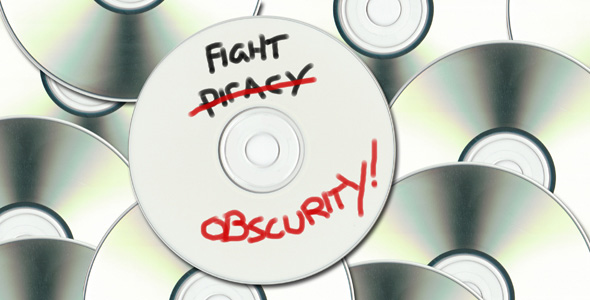When I used Amazon to publish Year 18: The Schism, the first book in my dark epic fantasy series, Pearseus, I was asked whether I wanted to use DRM for the book or not. I was also warned that I would be unable to change the setting in the future. So, just what is this DRM, and how should one answer that question?
DRM stands for Digital Rights Management. It locks a file so that it can only used by the buyer. Originally used by the gaming industry, it has expanded into all things digital, such as movies, music and eBooks.
The publisher or the author is responsible for deciding whether they wish to use DRM or not. DRM is not limited to one format and is fundamentally conceivable in all formats. In general, Adobe Digital Editions (ADE) copy protection is used for this purpose. In order to read text, users must first install ADE on their PC or mobile reading device, and then register with an Adobe ID. This is a relatively complicated process and distracts the user experience.
One alternative to Adobe Digital Editions is watermarks, which are partially visible for the consumer but not distracting. This means that purchased eBooks can be uniquely allocated to one consumer. The advantage of a so-called soft DRM strategy is that it does not have a negative impact on the process of reading eBooks. This is the model introduced in the US by Amazon and Apple, in which content is registered to one user. This DRM policy allows the user to read eBooks on many devices, but not to transfer it to a device registered to someone else. The restriction often goes unnoticed and usually does not affect consumers.
Cumbersome DRM have largely disappeared, except in the gaming industry. Most analysts predict that this trend will continue, and developments on the eBook market will follow those that have been seen on the music market. Music publishers abandoned DRM in spring 2009, after a lengthy battle against file sharing. Experts believe that abolishing DRM is necessary sooner rather than later because illegal content will be available anyway as the market develops, and that DRM will not be able to perform its protection function. On the other hand, most experts expect that soft DRM will become established.
Put your money where your mouth is
So what did I decide in the end? Just in case you’re wondering, I decided to not use DRM for Year 18: The Schism. Why? Because I realized that my main problem was not fighting piracy, but fighting obscurity. Like Neil Gaiman, I reached the conclusion that what piracy really amounts to what is “people lending books“. To quote the great man himself:
““[U]nderstanding that gave me a whole new idea of the shape of copyright and what the web was doing. Because the biggest thing the web was doing is allowing people to hear things, allowing people to read things, allowing people to see things they might never have otherwise seen. And I think, basically, that’s an incredibly good thing.”
Acknowledgment:
A few days ago I came across a fascinating report regarding the future of e-Books and e-Readers by PriceWaterhouseCoopers. The analysis itself is somewhat dated (2010) but the survey gave some interesting pointers for us, self-published authors. So I will be posting highlights from the report as I go through it.







I didn’t allow DRM either for my debut novel and I intend to keep it that way for the next ones too. I had already decided I wanted to put my book out there and get people talking about it so people lending my ebook to friends and family was actually what I wanted. Also, when my formatter returned the finished article to me for the upload, it came with the advice NOT to use DRM saying that it is widely frowned upon by readers to apply DRM restrictions. In this sense, the formatter advised me to avoid being branded as an author who does that. As you said Nicholas, it is like lending out books and this has been happening since books first existed. At the end of the day, if the author wants his book out there, it’s sabotage to his success to not allow people to share their likes with others.
My feelings exactly! Of course, when we’re super rich and famous, I reserve the right to go around moaning how piracy has forced me to close one of the swimming pools at my resort, leaving me with just six of them now… 😀
Very enlightening article and comments for a subject I know little about. As I trust you, I’ll follow your suggestion when the time comes 🙂
Oh my, thanks! That’s quite the responsibility! 🙂
I have been reading with interest on the experiences of people who made their work available for free. Ksenia Anske is one of them (this year), Matt Mason is another (back in 2011). I will soon add a third post on that matter, with all the details, then you can make your informed decision when the time comes. 🙂
I was going to cite Neil Gaiman as well, but M T McGuire got there first. I’ve seen my non-DRM work “pirated” on various websites, but since I’m completely unknown as an author (and self-publishing on a budget of approximately nothin’, to boot), I consider it free advertising. It’s practically a favor. If on the off-chance I ever become successful, however, my opinion will probably change.
Both you and MTM raised excellent points. My feeling is that both newbies and bigshots actually benefit from piracy, but it probably hurts the most those in-between. It can be a blessing for sure, because of the free promotion, especially if you can use it to push your other stuff, say t-shirts (eg https://www.zazzle.ca/pearseus/product/235259257503253062?CMPN=EMC-BV2983370235). A crude example perhaps, but you get my point.
If I can quote Mater, from Cars. “ter not to.” DRM is pants. I like the idea of watermarking, I have CD’s with DRM which I had to spend ages ripping in a complicated and data lossy way to disks so I could actually listen to them. The originals are of little more use than cup mats. Neil Gaiman, who was anti piracy, discovered that in countries where his books were most pirated his sales were increasing the fastest. In short, I like the watermark idea, the soft idea, if it’s pirated but people know it’s by me, I don’t care if it means they’ll buy my other books from legitimate sources. I think I’m quite on a limb in my view, but there it is.
Cheers
MTM
I dislike DRM in its present form. It can be a blunt instrument, punishing the innocent as well as the guilty. Also, it does little in practice to deter piracy. As my day job is web developer (www.istomedia.com), I know first-hand the many ways to rip a CD/DVD, and the many legitimate use of such an action. I’m also painfully aware of the frustration of buying software but being unable to use it because of various locks and restrictions.
Of course, as a creator I might at some point decide that some protection is better than none, although years of conditioning me against DRM through experience frustration as a user makes that harder.